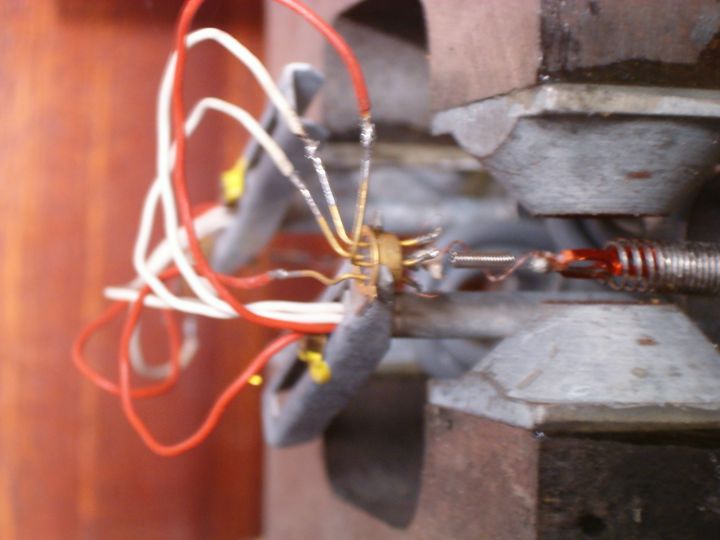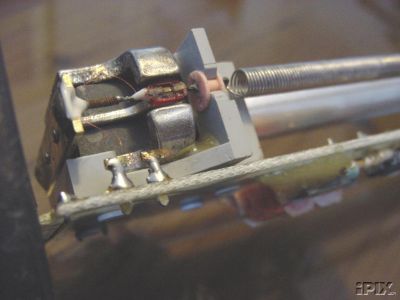Bo Deadly
Well-known member
Someone mentioned the AKG spring reverbs in another thread and how the dual driver/recovery coils at each end of the spring are used to cancel out correlated signals and thereby leave only the signals with no coherence whatsoever. That is fascinating. I found a document that describes this [1]. Here is a quote:
As can be seen from the block diagram (figure 6) the electronic portion, for each channel, consists of an input amplifier, an output amplifier, and two attenuation amplifiers. The spring is excited by feeding the original signal into one coil half of each of the moving coil systems arranged at either end of the spring. o The "dry" signal is fed in phase, to each moving coil half on the ends of the spring, the reverberated signal is picked up by the two remaining coil halves, amplified, and connected in opposite phase. In this manner compensation of all interdependent and related Signals is achieved, TTL being a reciprocal and passive transmission system.
To illustrate this: If the circuit were to be applied to an ideal line the reflections would all be in phase at the output and would be cancelled by the out of phase connection of the output. However, since the transmission properties of the spring are statistically changed, it produces irregular, statistical, frequency independent reflections which appear at the ends of the spring with no coherence whatsoever. Therefore, these signals will not be cancelled at the out of phase output.
Note: There are no figures in the document but you can find pics in Google Images.
However I don't fully understand this because I would think that any signals would be convoluted by the spring by the time it reached the other end and so there would not be much correlation between the two ends anyway. Can anyone explain this cancellation a little more?
I wonder how effective it really is and if it could somehow be employed in a custom unit using conventional music wire springs. Of course one would have to craft the very small magnet wire coils that make up the transucers suspeded between the C magnets but there are folks around here that are good at making coils.
[1] http://lcweb2.loc.gov/master/mbrs/recording_preservation/manuals/AKG%20BX%2020E%20Reverberation%20Unit.pdf
As can be seen from the block diagram (figure 6) the electronic portion, for each channel, consists of an input amplifier, an output amplifier, and two attenuation amplifiers. The spring is excited by feeding the original signal into one coil half of each of the moving coil systems arranged at either end of the spring. o The "dry" signal is fed in phase, to each moving coil half on the ends of the spring, the reverberated signal is picked up by the two remaining coil halves, amplified, and connected in opposite phase. In this manner compensation of all interdependent and related Signals is achieved, TTL being a reciprocal and passive transmission system.
To illustrate this: If the circuit were to be applied to an ideal line the reflections would all be in phase at the output and would be cancelled by the out of phase connection of the output. However, since the transmission properties of the spring are statistically changed, it produces irregular, statistical, frequency independent reflections which appear at the ends of the spring with no coherence whatsoever. Therefore, these signals will not be cancelled at the out of phase output.
Note: There are no figures in the document but you can find pics in Google Images.
However I don't fully understand this because I would think that any signals would be convoluted by the spring by the time it reached the other end and so there would not be much correlation between the two ends anyway. Can anyone explain this cancellation a little more?
I wonder how effective it really is and if it could somehow be employed in a custom unit using conventional music wire springs. Of course one would have to craft the very small magnet wire coils that make up the transucers suspeded between the C magnets but there are folks around here that are good at making coils.
[1] http://lcweb2.loc.gov/master/mbrs/recording_preservation/manuals/AKG%20BX%2020E%20Reverberation%20Unit.pdf

















![Electronics Soldering Iron Kit, [Upgraded] Soldering Iron 110V 90W LCD Digital Portable Soldering Kit 180-480℃(356-896℉), Welding Tool with ON/OFF Switch, Auto-sleep, Thermostatic Design](https://m.media-amazon.com/images/I/41gRDnlyfJS._SL500_.jpg)
















